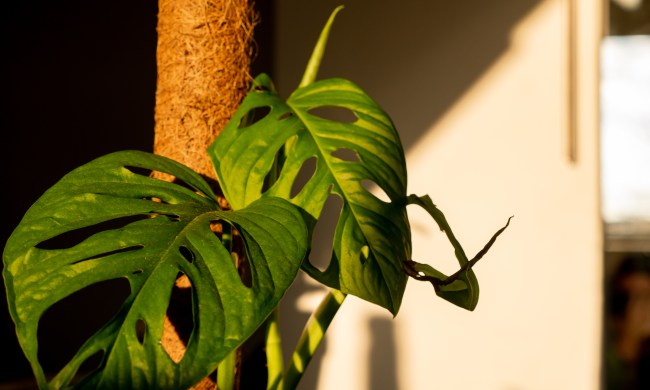Peace lilies are a popular houseplant known for their elegant white blooms and dark green leaves. They're said to bring a calming sense to a space, so much so that they’re often given as sympathy gifts. These plants even have a reputation for helping purify the air. Whether you want to grow them for these benefits or simply because they're beautiful, peace lilies are easy to care for and delightful to have. If you're asking "how do you care for a peace lily indoors," then this is the guide for you! We'll answer all your questions.
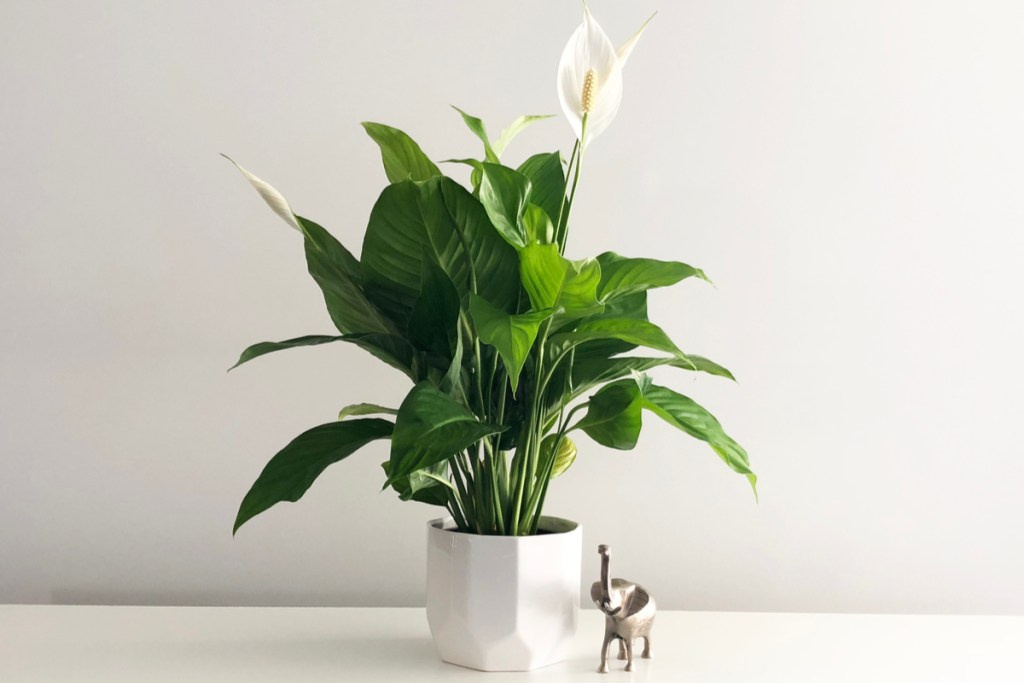
Benefits to having a peace lily in your home
Sometimes it can seem like every houseplant is the same. Maybe you’ve reached the point where you have a huge collection and you find yourself asking, “Well, what are peace lilies good for?” After all, what’s the point if it’s just another flower?
Growing peace lilies indoors actually comes with a few benefits (besides their beauty):
- They purify the air. Peace lilies, like many other plants, can filter out certain pollutants like benzene, carbon monoxide, formaldehyde, and xylene from the air in your home. They’ll help move you toward a cleaner, fresher space.
- They can absorb acetone. Although all those chemicals you use help keep your home looking its best, they can leave harmful vapors in the air. Peace lilies can filter out acetone and alcohol particles from things like paints, rubbing alcohol, and varnishes, in addition to other pollutants.
- They remove mold spores. Perhaps best of all, peace lilies help eliminate mold spores from your home (which is nice if you live in a particularly damp climate). Mold exposure, especially for those with allergies or asthma, can cause coughing, eye and throat irritation, and sneezing. Having a peace lily in your home may help reduce those effects.
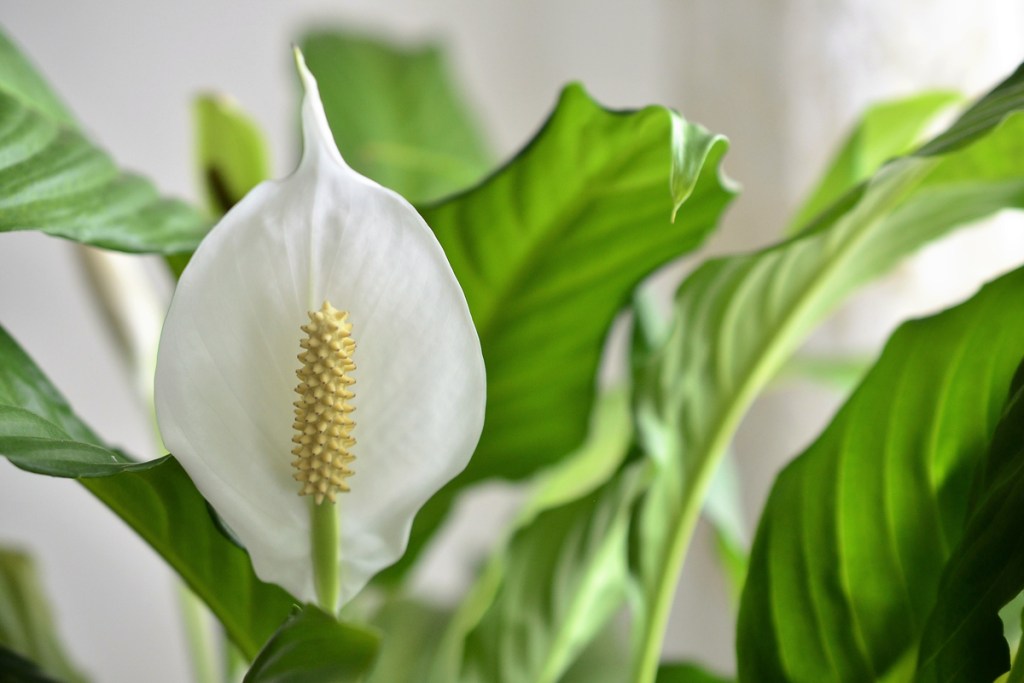
How do you care for a peace lily indoors
Although peace lilies can reach their mature size within three years, they can be quite difficult to get to bloom when grown indoors. Even the happiest, healthiest of potted peace lilies just don’t grow flowers, largely because they’re outside their natural habitat. It’s hard to meet the conditions of a tropical environment when you live in a temperate area, and even harder when you keep the plant indoors.
The best way to help encourage your peace lily to bloom its elegant flowers is to provide consistently ideal conditions. Here's what to do:
Step 1: Keep your peace lily indoors during cool weather.
If desired, you can move them to an outdoor space like a patio or balcony during the summer months; however, they should be brought back indoors before temperatures start to drop. Peace lilies are highly sensitive to cold, and lower temperatures can damage the plant.
Step 2: Place your peace lily where it has room to grow.
Peace lilies grow at a moderate rate, taking at least three years to reach maturity. When you get a new one, you’ll have some time to find the best spot in your home, which should either be one that can accommodate the plant’s mature size or one you can easily move it from when your peace lily needs more room to grow.
Step 3: Keep your peace lily in bright, indirect light, and avoid exposing it to direct light.
Peace lilies prefer bright, filtered light when grown indoors, so you’ll want to place them near a window that gets a decent amount of sun. Take care not to place them directly on the windowsill — they don’t like direct sun, and that amount of light could end up burning the leaves. Just like us, plants don’t like getting sunburnt, either! Keeping your peace lily on a table or plant stand near a south-facing window is ideal.
Step 4: Water when the top inch of the soil is dry.
When in doubt, err on the side of of caution. Underwatering is better than overwatering.
Step 5: Use a rich, loose, well-draining potting soil with lots of organic matter.
Step 6: Keep your plant in a high-humidity environment.
Step 7: Make sure to fertilize your peace lily.
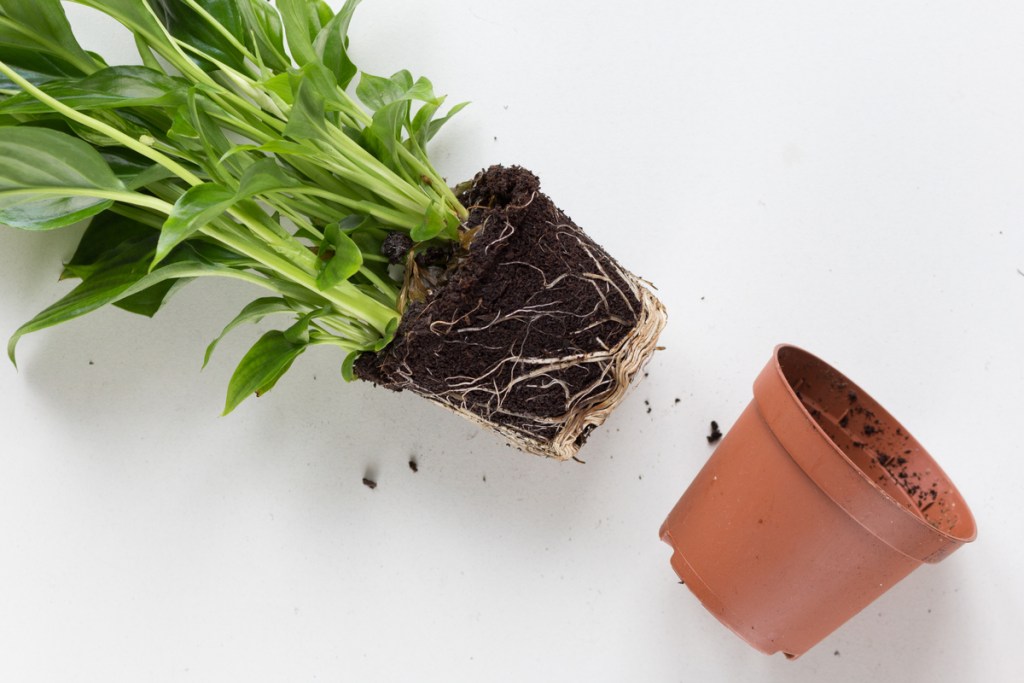
Can peace lilies be propagated?
If you find yourself wanting more than one of these beautiful plants, you can easily propagate them! Peace lilies can be propagated by dividing the offshoots from the parent plant during repotting, which can be done at any time of year (though if you can wait to repot once the growing season has started, the plant will have plenty of time to continue growing strong and establishing roots).
Here's how to remove the offshoot from the parent plant:
Step 1: Gently tug the offshoot away from the parent plant.
Some offshoots will separate with just a little pull, but be careful not to pull too hard and damage them. If they don't separate with a gentle tug, or if you're worried about damaging the plant, move on to step 2!
Step 2: Cut the shoot away from the parent plant using a sterilized knife.
Step 3: Choose a shoot that has at least two leaves and roots of its own.
If it doesn’t, it’s best to let the offshoot grow a bit more before removing it (don’t worry, this won’t harm the parent plant!). You may need to dig carefully at the base of the plant to see if a shoot has roots.
Step 4: Plant the offshoot in a 6-inch pot with fresh soil and water so that it’s moist.
Step 5: Place the freshly potted plant in a similar location to the parent plant, so that it receives the same amount and type of light as it did before.
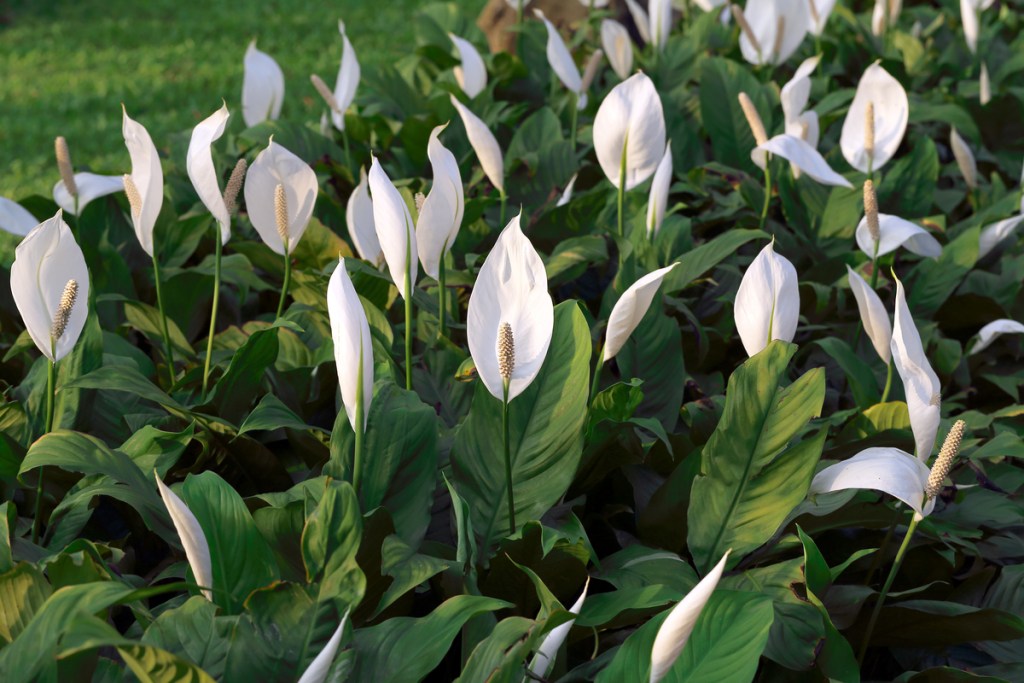
How long do peace lily blooms last?
More often than not, you'll find peace lilies in bloom at the nursery, although young plants may not have any flowers yet. Peace lily blooms are certainly hardy — they'll definitely last longer than your typical cut flowers. Given the right conditions, you can expect your peace lily flowers to last around one to two months.
After some time, the spathe and spadix flower structure will droop and turn brown, which is totally normal. It's up to you whether or not you want to cut off the spent blooms, but many people do so to keep their plant looking tidy. To encourage future blooms, simply follow the care steps listed above.
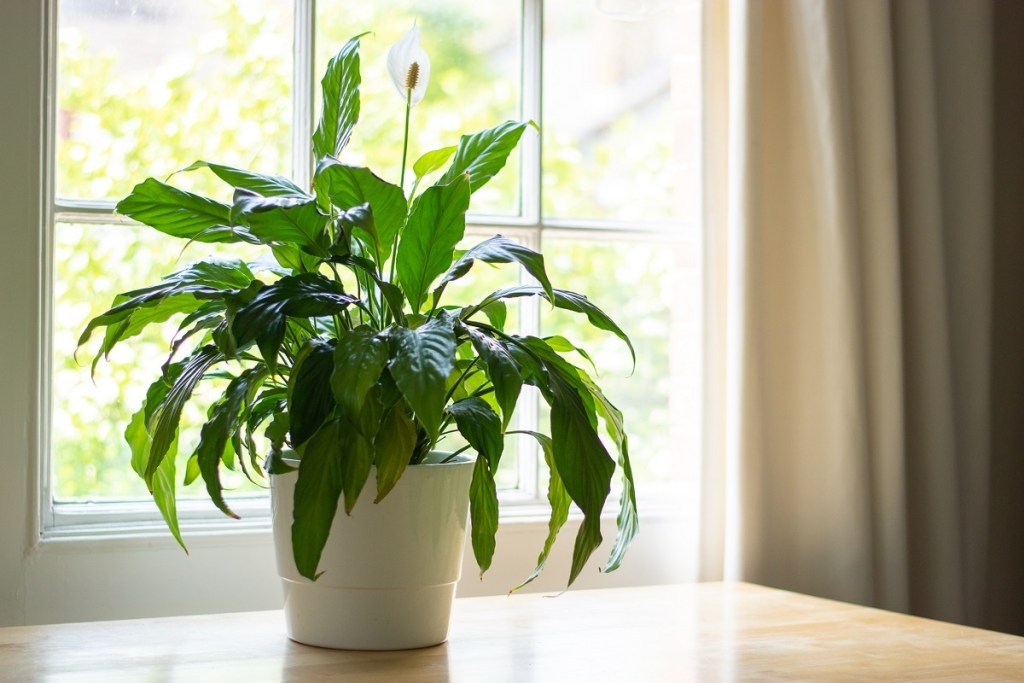
How long do peace lilies live?
The lifespan of your peace lily depends on the environment it's growing in and how well its needs are being met. Peace lilies growing outdoors tend to live 3 to 5 years, due to environmental stressors such as temperature fluctuations and droughts or flooding. However, indoor peace lilies that are being well-cared for can actually live much longer! With proper care, you can keep your peace lily alive for 10 to 20 years, or potentially even longer.
Since peace lilies are able to bounce back from so many things, it can be difficult to tell when they are actually dead. Brown leaves are a sign that something is going wrong, so identify the problem and do what you can to fix it. However, if the entire plant is brown and shriveled and it does not perk back up with regular care, your peace lily is likely dead.
Peace lilies are beautiful, calming plants. Although they are a bit particular about their environments, they're still easy enough for even a beginner to grow. It takes patience for a peace lily to bloom, but they're well worth the wait. With the right care and attention, you can keep them alive and happy for many years!


